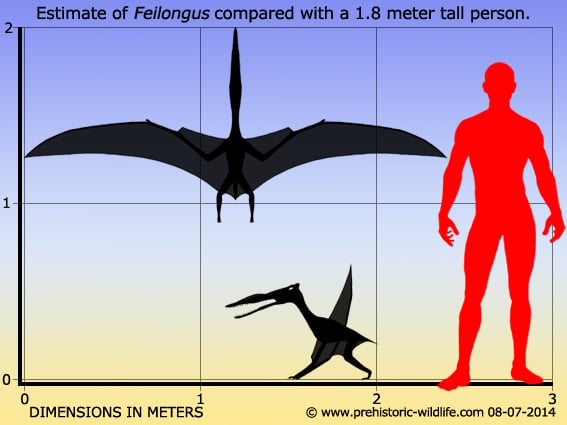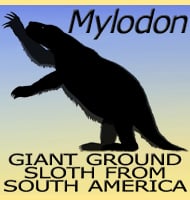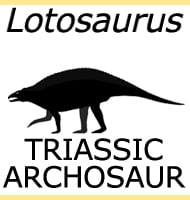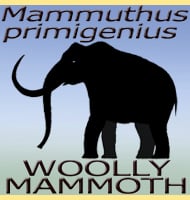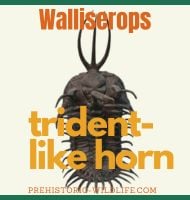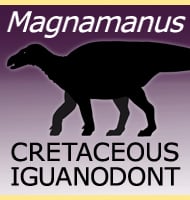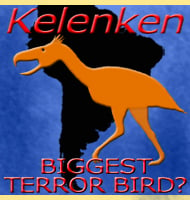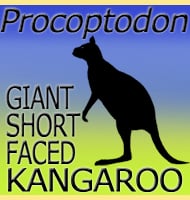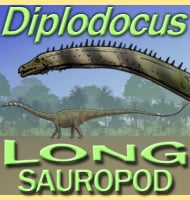In Depth
The only known example of the pterosaur Feilongus is incomplete and has been damaged in the fossilisation process. Only the skull, mandible and parts of the braincase are preserved. What can be gleamed from the fossil is that Feilongus had a large overbite with the upper jaw extended up to 2.7 centimetres beyond the tip of the lower jaw. The teeth were needle like, sharp and confined to the front third of the jaws.
There were also two crests, with one in the middle of the snout rising up by a small amount, taking up roughly a third of the length in skull proportion. The second rose from the back of the head in a short and rounded fashion. It has been speculated that it may have been the support for a larger crest that had not been preserved, either through removal or inability to fossilise because of soft tissue.
The top of the skull of Feilongus is curved in a concave manner, resulting in a thin snout that steadily rises up in thickness towards the eyes. It is also thought that the holotype specimen is actually of a sub adult.
Further Reading
– Pterosaur diversity and faunal turnover in Cretaceous terrestrial ecosystems in China. – Nature 437 (7060): 875–879. – Xiaolin Wang, Alexander W.A. Kellner, Zhou Zhonghe & Diogenes de Almeida Campos – 2005. – New Material of Feilongus (Reptilia: Pterosauria) from the Lower Cretaceous Jiufotang Formation of Western Liaoning. – Acta Geologica Sinica-English Edition. 88 (1): 13–7. – X. Wang, C. Shen, C. Gao & K. Jin – 2014.
